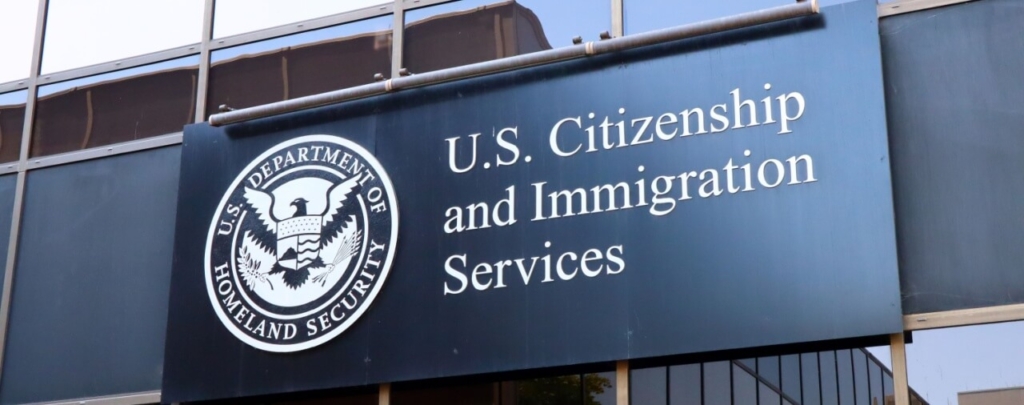Introduction
On December 18, 2017, the Executive Branch released the National Security Strategy of the United States of America [PDF version]. In this document, the Trump Administration articulated its national security policy and objectives going forward. The new National Security Strategy document represents a departure from the points of emphasis in the previous 2015 National Security Strategy document issued by the Obama Administration.
In this article, we will examine the new National Security Strategy document’s inclusion of immigration and border security. Although the discussion of these issues in the document are in line with the previously articulated positions of the Trump Administration, their inclusion in the National Security Strategy gives an indication of how the Trump Administration sees immigration issues in the context of national security. Additionally, we will compare the language in the 2017 National Security Strategy on these points with the language used in the 2015 National Security Strategy issued by the Obama Administration [PDF version].
Preface: Statements from President Donald Trump
Before examining the text of the new National Security Strategy itself, it is worth examining statements from the head of the Executive Branch, President Donald Trump.
The National Security Document begins with a letter from President Trump (see pages 3-4 of the PDF). In his letter, President Trump took the position that, prior to his taking office, “porous borders and unenforced immigration laws had created a host of vulnerabilities.” This mention of immigration policy contrasts with the letter issued by then-President Barack Obama along with the 2015 National Security Strategy, wherein President Obama stated that “[w]e continue to attract immigrants from every corner of the world who renew our country with their energy and entrepreneurial talents.” President Trump’s statement highlighted dangers stemming from inadequate enforcement of immigration laws, whereas then-President Obama’s statement highlighted benefits of immigration.
In the conclusion of his letter, President Trump stated that “[w]e are now enforcing our borders … and defending America’s sovereignty without apology.” On site, we have highlighted some of the significant changes that the Trump Administration has made to immigration policy in its first year [see article].
President Trump also gave a speech to mark the completion of the National Security Strategy [PDF version]. You may also watch the President’s remarks below:
The vast majority of President Trump’s remarks focused on issues other than those involving immigration. However, he devoted a couple of sections of his remarks to immigration policy and, notably, border security.
In his speech, President Trump stated that, “over the profound objections of the American people, our politicians left our borders wide open.” He criticized lax enforcement that allowed illegal entries and the admission of millions without proper vetting. In a harsh critique of prior policy, President Trump stated that “[l]eaders in Washington imposed on the country an immigration policy that Americans never voted for, never asked for, and never approved — a policy where the wrong people are allowed into our country and the right people are rejected.” Interestingly, the final point could be read as a nod to a merit-based system for employment immigration, which President Trump had previously expressed support for, albeit along with support for overall cuts to legal immigration [see blog].
Later in his remarks, President Trump put border security in the context of his broader view of national security. He stated that “[t]his strategy recognizes that we cannot secure the nation if we do not secure our borders.” This, he explained, was why the National Security Strategy “includes a serious plan to defend our borders.” To this effect, President Trump explained that the National Security Strategy calls for:
The construction of a wall on the southern border;
Ending chain migration and the “horrible” visa lottery programs;
Closing loopholes that undermine enforcement; and
Strongly supporting our Border Patrol agents.
Finally, President Trump extolled his administration’s establishment of “strict new vetting procedures to keep terrorists out of the United States,” adding that “our vetting is getting tougher each month.”
The National Security Strategy on Immigration
The National Security Strategy itself addresses various immigration related issues. We will examine each of its significant points about immigration and border security in the forthcoming sections.
National Security Strategy Section on Border Control and Immigration Policy
On page 9 of the National Security Strategy, the Trump Administration included a section titled “Strengthen Border Control and Immigration Policy.” Here, the National Security Strategy states that “[s]trengthening control over our borders and immigration system is central to the national security, economic prosperity, and the rule of law.” This statement is notable in that it frames border security explicitly as a matter of national security.
The section also distinguishes legal immigration (“[t]he United States understands the contributions immigrants have made to our Nation throughout its history”) from illegal immigration (“[illegal immigration] burdens the economy, hurts American works, presents public safety risks, and enriches smugglers and other criminals”).
The section states that “[t]he United States affirms our sovereign right to determine who should enter our country and under what circumstances.” The emphasis on sovereignty is notable in light of the recent litigation surrounding travel restrictions imposed on nationals of certain countries and refugees. The section affirms that “[t]he United States will continue to welcome lawful immigrants who do not pose a security threat and whose entry is consistent with the national interest…” However, the statement adds that the United States will “enhance[] the screening and vetting of travelers, close[] dangerous loopholes, revis[e] outdated laws[,] and eliminat[e] easily exploited vulnerabilities.”
The section concludes by stating the immigration reform objectives of the Executive Branch, including that randomized entry (the diversity visa lottery) and extended-family chain migration are “contrary to our national interest.” The National Security Strategy adds that “[r]esidency and citizenship determinations should be based on individuals’ merits and their ability to positively contribute to U.S. society, rather than chance or extended family connections.” This statement thus alludes to the concept of “merit-based” immigration reforms.
The document then lists four “priority actions” for implementing the new national security strategy on border control and immigration policy.
The first priority action is to “enhance border security.” This section lists several measures, such as “the construction of a border wall, the use of multilayered defense and advanced technology, the employment of additional personnel, and other measures.” Additionally, it states that the United States will work with foreign partners to “deter, detect, and disrupt suspicious individuals well before they enter the United States.”
The second priority action is to “enhance vetting.” The National Security Strategy itself does not contain many specifics on enhancing vetting. However, we have discussed some of the work already done on this issue by the Trump Administration in previous posts, most pertinently in our article on President Trump’s September 24, 2017 Presidential Proclamation [see article].
The third priority action is to “enforce immigration laws.” Here, the National Security Strategy takes the position that the enforcement of immigration laws at the border and in the interior “provide an effective deterrent to illegal immigration.” It adds that “[t]he apprehension and swift removal of illegal aliens at the border is critical to an effective border security strategy.” This provision also calls for an increase in efforts “to identify and counter fraud in the immigration process, which undermines the integrity of our immigration system, exploits vulnerable individuals, and creates national security risks.”
The fourth priority action is to “bolster transportation security.” Here, the Trump Administration states that it will improve information sharing across the government and with foreign partners “to enhance the security of the pathways through which people and goods enter the country.” This provision alludes to the construction of a biometric entry-exit system, which remains under development by the Department of Homeland Security (DHS).
Placing Border Security in the Context of National Security
There are several other points at which the National Security Strategy places border security in the context of national security.
On page 7 of the National Security Strategy document, the proposition is advanced that “[r]eestablishing lawful control of our borders is a first step toward protecting the American homeland and strengthening American sovereignty.” Here, we find two points of import. First, border security is put in the context of protecting the United States from attacks. Second, it is placed in the context of strengthening American sovereignty. As we noted earlier, the National Security Strategy also sees affirming the right of the United States to determine who may enter and under what terms as a central national security issue.
Comparing to the 2015 National Security Strategy
The 2015 National Security Strategy document of the Obama Administration placed far less emphasis on border security and the immigration laws in the context of national security.
On page 15 of the 2015 National Security Strategy, the Obama Executive Branch stated that “[i]mmigration reform that combines smart and effective enforcement of the law with a pathway to citizenship for those who earn it remains an imperative.” Regarding “smart and effective enforcement of the law,” it is important to note that the 2015 National Security Strategy also called for the legalization of certain aliens in the United States illegally, and it was published shortly after the issuance of the Obama Administration’s civil enforcement priorities and its now-defunct DAPA program. This issue was not addressed in the 2017 National Security Strategy.
Border security was also addressed differently in the 2015 National Security Strategy. On page 8, border security was discussed solely in the context of guarding against terrorism, illicit networks, and other threats and hazards. On page 28, the 2015 National Security Strategy alluded to conditions in Central America as causing “[m]igration surges involving unaccompanied children across our southern border…” The 2015 National Security Strategy described it as “one major consequence of weak institutions in violence.” Although the 2017 National Security Strategy addresses border security in these contexts as well, it focuses heavily on illegal immigration and the effect that domestic policy has on illegal immigration and border security issues.
Conclusion
Although none of the statements on immigration in the National Security Strategy or from President Trump discussing the National Security Strategy breaks new ground, they are significant in that they show how the Trump Administration places immigration and border security in the context of the national security of the United States. Even absent other policy differences, the focus on immigration and border security as national security issues makes for a departure from the Obama Administration.
The policy pronouncements in the National Security Strategy document include matters that the Trump Administration may undertake on its own (e.g., setting enforcement priorities and posture) and those it would need Congress to authorize (e.g., construction of a border wall, ending the diversity lottery). As always, it remains to be seen how the Trump Administration’s immigration policies, and overall national security posture, will develop as it closes its first year in power.





